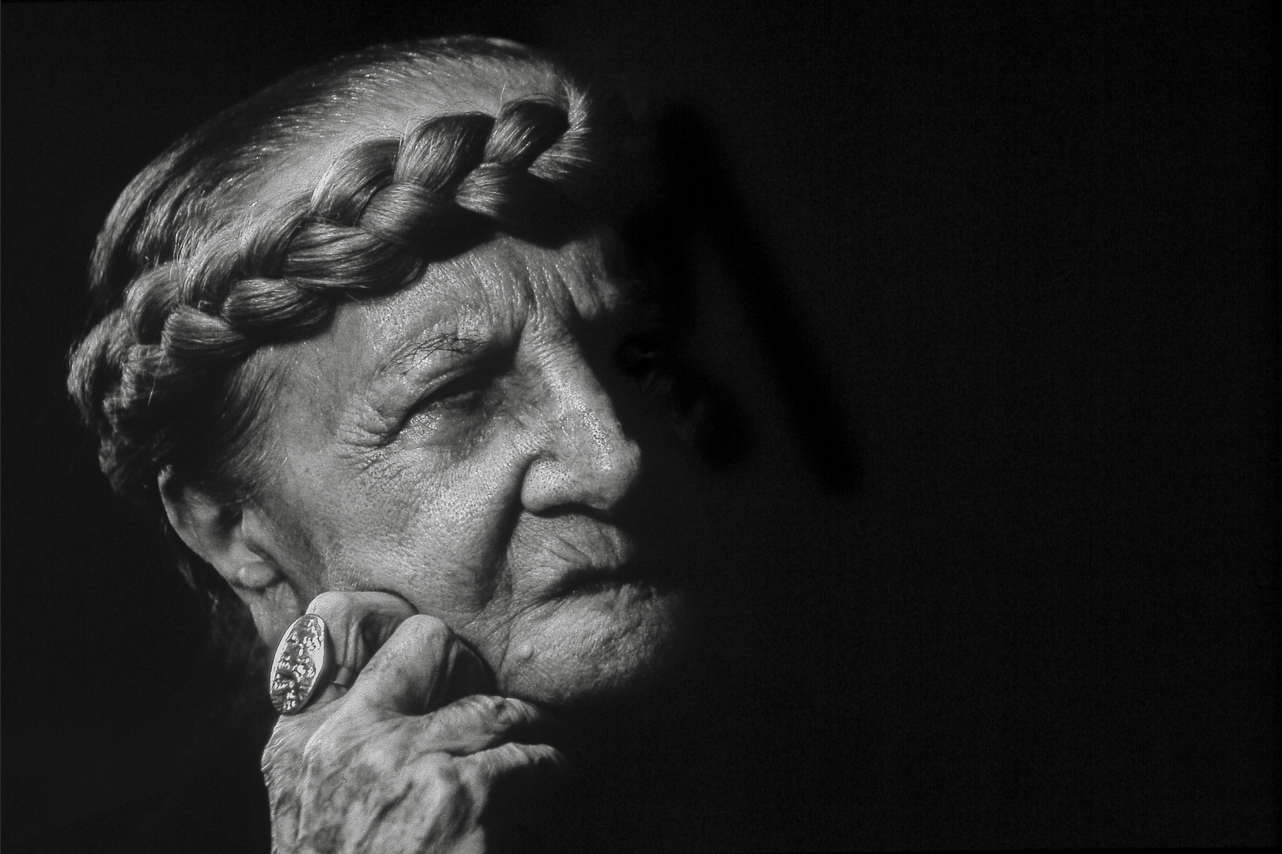Carol Rama
Carol Rama was born in 1918 in Turin, Italy, where she lived until her death in 2015. She began making art at age 15 as a form of self-therapy, following a childhood filled with trauma which included visiting her mother while she lived in a mental hospital and her father’s suicide after the bankruptcy of his bicycle factory.
The intense youth Rama experienced gave way to a psychologically charged and deeply personal art practice that involved her making everything from watercolours to assemblage paintings. Over several decades, her work related to many avant-garde movements, although she was officially not a part of any group. In the 1950s it was the Concrete Art movement in Turin, and later, her use of abstraction and industrials materials connect her to American Abstract Expressionism and the Italian Arte Povera movement. Despite her self-imposed distance from the art world, Rama had notable friends including Edoardo Sanguineti, Eugenio Montale, Man Ray, Andy Warhol, and Pablo Picasso.
In the ’70s, she became close to Man Ray, who spent extended periods in Italy, and socialized with artists like Warhol and Oppenheim. Recharging her approach to assemblage, Rama turned to rubber and the inner tubes found in tires, which, like the various objects found in the Bricolages, were mostly sourced from local factories. Dealing more explicitly with traditions of painterly abstraction, series such as ‘Spazio anche piu che tempo’ and ‘Fase del nero’ feature strips of rubber of different hues in monochrome fields. In the late ’70s, Rama began incorporating metal hooks into these paintings, using them to hang intact inner tubes over her compositions. While powerfully retaining her signature allusions to bodies and base matter, the rubber tire works foreground a newfound reflection on pictorial space.
In 2003, Rama was awarded the Golden Lion for Lifetime Achievement at the Venice Biennale. A major retrospective exhibition, “Carol Rama: Antibodies”, was held at the New Museum, New York in 2017.
